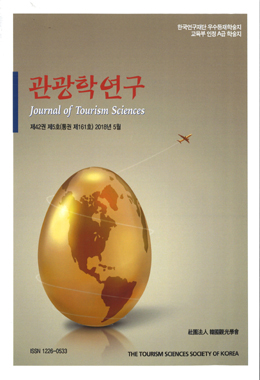본 연구는 새로운 기술에 대한 개인의 기술준비도에 차이가 있음을 인지하고 스마트폰 사용자를 대상으로 개인의 기술준비도가 스마트폰 관광 애플리케이션의 지각된 유용성과 지각된 사용용이성 그리고 이용의도에 미치는 영향을 파악하고자 하였다. 연구결과, 긍정적 기술준비도(낙관성, 혁신성)는 이용의도에 직접적인 영향을 미치지는 않았지만 지각된 유용성과 지각된 사용용이성에는 영향을 미치는 것으로 나타났다. 반면, 부정적 기술준비도인 불편함과 불안감은 지각된 유용성, 지각된 사용용이성, 이용의도에 모두 유의한 영향을 미치지 않는 것으로 나타났다. 기술수용모델의 신념인 지각된 사용용이성은 지각된 유용성에 유의미한 영향을 미치고, 지각된 유용성과 지각된 사용용이성 모두 이용의도에 유의미한 영향을 미치는 것으로 나타났다. 이는 새로운 기술에 대해 긍정적이고 혁신적 성향을 가진 사람들이라도 관광 애플리케이션 이용에 있어 직접적인 영향관계는 없지만, 애플리케이션이 유용하거나 사용하기 편리하다고 생각 될 경우에는 이용의도가 있다고 판단할 수 있다. 본 연구결과를 토대로 이론적 시사점과 실무적 시사점을 제시하였다.
The purpose of this research is to recognize that there is a difference among individuals’ technology readiness to new technology and to investigate the effects of technology readiness on perceived usefulness, perceived ease of use, and intention to use for targeting smart phone users. The results showed that positive technology readiness (optimism and innovation) weakly affected perceived usefulness and perceived ease of use but did not directly affect intention to use. On the other hand, negative technology readiness, discomfort, and insecurity did not affect perceived usefulness, perceived ease of use, and intention to use. Perceived ease of use positively affected perceived usefulness, and both perceived usefulness and perceived ease of use had a significant effect on intention to use. Thus, people who are positive and innovative about new technology are not affected by intention to use, but if they decide that new technology would be useful and convenient to use, they do intend to use it. Based on the results, this study suggests theoretical and practical implications.


